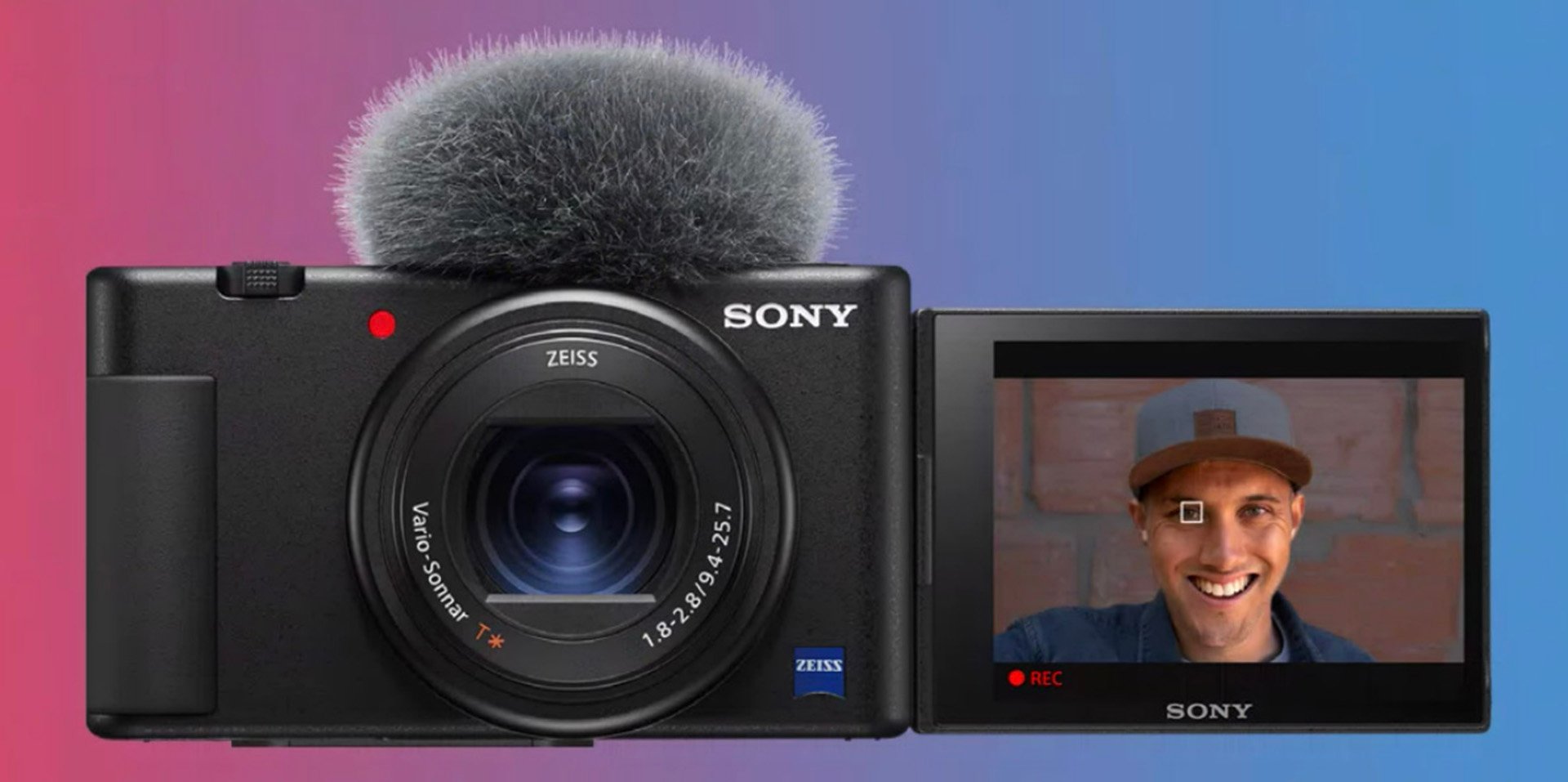Sony ZV-1 review
-
-
Written by Gordon Laing
The Sony ZV-1 is a compact camera aimed at the needs of vloggers and video creators, while also delivering decent photo capabilities. Announced in May 2020, the ZV-1 shares a lot in common with the earlier RX100 V(A), including the same 20 Megapixel 1in sensor with confident phase-detect autofocus and 4k video up to 30p, coupled with a 24-70mm f1.8-2.8 zoom, but features a number of upgrades to the body and software to make it more desirable for the video and hybrid market. Sony sees it as the first model in a new series, hence the different name, and it’s clearly going after the Canon PowerShot G7X III with a more powerful feature-set that’s priced only slightly higher.
I’ll start with what’s new: the ZV-1 has switched the vertically-tilting screen of the recent RX100 models for a side-hinged screen that can face-forward without blocking the top surface; in a necessary update over the RX100 V, it’s also now touch-sensitive. The top surface now has a much enlarged movie record button that’s easier to press, an upgraded built-in directional microphone which comes with a windshield that slides onto the hotshoe; the hotshoe also supports Sony’s Multi-interface accessories, allowing wire-free connection of compatible Sony microphones although it doesn’t support the ECM-B1M digital mic. Sticking with audio, there’s also a 3.5mm analogue mic input on the opposite side of the camera to the screen hinge, and Sony’s also finally fitted a grip to the previously smooth flat-front; there’s also a new tally light to indicate when you’re recording. Note the popup viewfinder of recent RX100 models has been sacrificed to make room for the hotshoe and upgraded mic, as well as to meet a lower price point; the G7X III doesn’t have a viewfinder either.
In terms of software improvements, the ZV-1 unsurprisingly gets Sony’s latest Real-time Eye-AF and Focus Tracking in movies, as well as new Face Priority auto exposure which spot-meters faces for correct exposures even when strongly backlit; Sony’s also promising better skin tones. A new Background Defocus mode allows you to temporarily deploy shallow depth-of-field effects mid-clip by opening the aperture and automatically applying the ND filter if necessary. Meanwhile the new Product Showcase mode focuses on faces and eyes, but automatically prioritises anything that comes closer, like a product you’re reviewing, even if your eyes and face are still visible on the frame – so no more covering your face when you want the focus to switch. Crucially behind the scenes is a sensor that features embedded phase-detect autofocus, giving the ZV-1 the confidence of the RX100 V(A) and upwards, but at a price that’s only a little more than the G7X III.
I’ve always felt the existing RX100 V(A) was already close to being the perfect vlogging camera, taking the lead in autofocus over rivals like the G7X, albeit with a higher price; all it needed was a mic input. The new ZV-1 brings you that capability, but goes further by upgrading the built-in mics, providing a hotshoe to mount accessories, changing the screen articulation so nothing gets blocked, and improving the software to reduce focus and exposure annoyances while filming. The loss of the RX100’s lovely popup viewfinder initially seems a shame, but the lack of viewfinder hasn’t harmed sales of Canon’s G7X line while crucially now allowing Sony to compete on price. With a retail price that’s typically only 10% more than the G7X III, the Sony ZV-1 simply delivers a far more compelling proposition, coupling the RX100’s excellent focusing with a bunch of enhancements that will delight vloggers and video creators alike.
Check prices on the Sony ZV-1 at B&H, Adorama or WEX. Alternatively get yourself a copy of my In Camera book or treat me to a coffee! Thanks!




